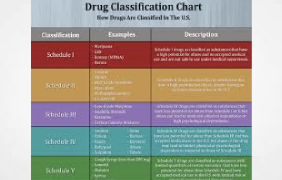Canadian Blog SLAW writes……
Given the growing number of jurisdictions legalizing the sale and use of cannabis (including Canada in 2018) and the complexity of this drug, it became clear to the author that information, in the form of a book, was required. Wigmore extensively assessed peer-reviewed scientific literature on the human forensic toxicology of tetrahydrocannabinol and other cannabinoids found in marijuana (cannabis). In this book, he presents over 550 of the approximately 5,000 studies he examined. Studies are organized into eight different chapters covering how cannabis is absorbed and eliminated, biomarkers of cannabis use, effects on driving ability and on health and other behaviours, post-mortem cannabinoids, and various types of cannabinoids and related compounds.
https://www.irwinlaw.com/titles/wigmore-cannabis
Full Review
Wigmore on Cannabis: The Forensic Toxicology of Marijuana for Lawyers and Other Medicolegal Professionals. By James G. Wigmore. Toronto: Irwin Law, 2018. xxxviii, 554 p. With a foreword by Robert M. Langville. 9781552214848 (paperback) $110.00.
Reviewed by Margo Jeske
University of Ottawa Library
In CLLR 44:1
Author James G. Wigmore worked as a forensic toxicologist for over 29 years at the Centre of Forensic Sciences in Toronto. He has testified in over 700 criminal cases and at numerous personal injury civil cases and coroner’s inquests. He has published over 70 scientific articles in forensic toxicology and authored Wigmore on Alcohol, published by Irwin Law in 2011.
Given the growing number of jurisdictions legalizing the sale and use of cannabis (including Canada in 2018) and the complexity of this drug, it became clear to the author that information, in the form of a book, was required. Wigmore extensively assessed peer-reviewed scientific literature on the human forensic toxicology of tetrahydrocannabinol and other cannabinoids found in marijuana (cannabis). In this book, he presents over 550 of the approximately 5,000 studies he examined. Studies are organized into eight different chapters covering how cannabis is absorbed and eliminated, biomarkers of cannabis use, effects on driving ability and on health and other behaviours, post-mortem cannabinoids, and various types of cannabinoids and related compounds.
For each study presented, there is a reference number relating to the chapter and specific section, as well as a complete citation for each reference, followed by an abstract written by Wigmore wherein he attempts to avoid as much scientific jargon as possible. Abbreviations are often used, and readers will be glad to find an appendix of abbreviations to which they can refer. Studies abstracted provide information on cannabis use, risks, and consequences, and include a general picture of the current state of medical cannabis use among a sample of approved users in Canada (Ref. No. 10114). Additional studies reveal the following: 1) the presence of cannabidiol, cannabinol, or THC-glucuronide indicates recent use but their absence does not exclude it (Ref. No. 10403); 2) exhaled breath sampling may provide a procedure not only more convenient for the donor but also easier to control for the collector (Ref. No. 40101); and 3) public education concerning THC impairment should also be a priority (Ref. No. 50801).
In addition, where applicable, Wigmore has created tables summarizing and simplifying data found in the study. These tables greatly assist the reader in understanding the differences and similarities between the effects of alcohol and cannabis use. Tables illustrate such topics as the advantages and disadvantages of various methods of inhaling cannabis (Ref. No. 10115); odds ratio of driving error/violation with cannabis, alcohol, or a combination (Ref. No. 50524); and legal THC thresholds in various European countries (Ref. No. 50710). Finally, Wigmore excerpts the studies’ authors own words, giving the reader a quick look at each study presented.
Of note, a cannabis timeline is included that provides a quick history of how cannabis was discovered and has come to be legalized in several jurisdictions. Indices covering the studies, authors, publication years, and subjects enable researchers to focus on areas of interest and will assist readers in the pursuit of additional information.
The importance of the examination of cannabis and its legalization is evident in the plethora of books that are now being published. Medical and legal practitioners will find this an indispensable tome with up-to-date scientific evidence related to cannabis and its use. Academic law libraries will also benefit from having this practical book in their collections, as it emphasizes the depth of analysis that has been undertaken and will continue to be required as new cannabis-related issues arise in our courts.


















